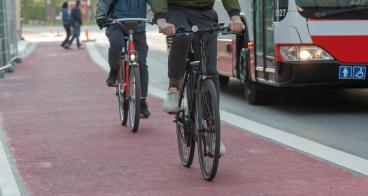Towards more integrated and safer micromobility adoption: what data says
Strengthening public private collaboration is key to improve attractiveness and safety of micromobility services in European cities. This is the core recommendation from more than a dozen experts who reflected on the challenges and opportunities to boost the adoption of micromobility.
Improved collaboration between industry and policy makers is the way forward to encourage the deployment of new, fast-evolving services, and create a supportive environment for safe and convenient micromobility services.
One of the key topics explored by the experts is to improve the multimodal integration for micromobility. Following this premise, a comprehensive and integrated city regulation is needed, as for example in Amsterdam, where micromobility operators are allowed to operate in the city centre only if they also operate outside the city centre.
Public Transport Authorities (PTA) need to become orchestrators of the local mix of mobility options, thereby incentivising sustainable behaviours. This can be achieved thanks to simplified and seamless data access and exchange between private and public actors. Coherent and up-to-date city regulation will also be key to ensure sustainable, transparent and safe micromobility services.
Another very important aspect to consider is the sense of safety that must be provided by the urban infrastructure, the design of the vehicles, as well as the behaviour of the users. The data available shows that a micromobility trip is five times safer than one by powered two-wheeler (e.g. moped or motorcycle). Crash statistics show that motor vehicles are involved in 80% of bike and scooter deaths.
Workshop experts unanimously considered that the most efficient way to make e-scooter rides safer is to create protected spaces for cycling and micromobility. Traffic-calming measures can also enhance riders’ safety: in Amsterdam, a 30km/h limit in all the city will help achieve behavioural change.







